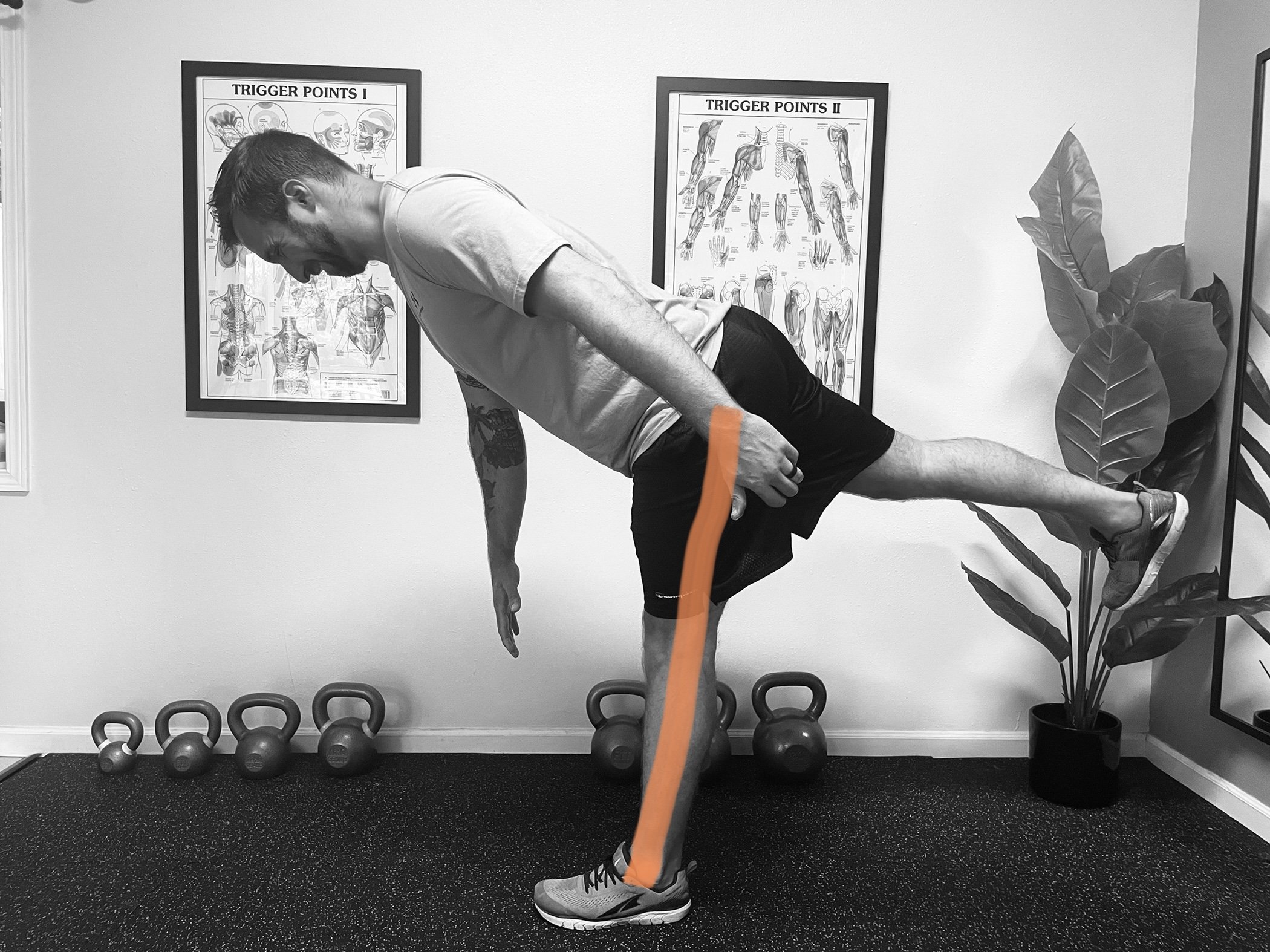How To Do Single Leg Deadlifts With Perfect Form
The single leg deadlift is an advanced exercise with a host of benefits for adults limited by joint pain. In this article we’ll show you how to do single leg deadlifts with perfect form and cover common mistakes to avoid aggravating joint pain.
The Benefits Of Single Leg Deadlifts
The single leg deadlift is an advanced strength and balance move that I include in most plans to treat joint pain. While this exercise targets your hamstring and glutes it has benefits for the whole body. The benefits of this exercise include:
1. Strengthening Your Posterior Chain
Your posterior chain of muscles starts on the bottom of your foot and runs the entirety of your back to the top of your skull. Strengthening your posterior chain improves muscular balance. This takes pressure off your joints and should be part of any plan to solve knee, back, and neck pain.
2. Improving Balance and Control
Single leg balance not only has important physical benefits, it can actually be a predictor of your life span. The single leg deadlift is a fun and challenging exerise to improve balance.
3. Ingraining Important Movement Patterns
How you move is just as important as how much you move when it comes to solving joint pain. Learning, practicing and understanding certain movements like the hip hinge helps to limit impact on your joints for less chronic pain. The single leg deadlift is an advanced hinging movement that helps ingrain this important movement pattern.
How To Do Single Leg Deadlifts
Ready the practice? Follow these instructions to learn how to do single leg deadlifts with perfect form. Then keep reading to learn how to avoid common mistakes with this movement. To perform single leg deadlifts with perfect form:
Start with a slight bend in your stance leg (don't lock out your knee!)
Engage the glute of the floating leg to help keep back leg inline with body
Hinge forward at hip of stance leg
As you hinge be sure to maintain a neutral spine, keep back leg in line with body and avoid rotating at your hips
Stop the movement when you feel tension in back of your stance leg. Avoid going too low and rouding your lower at your lwer back.
Return to starting position and repeat.
If balance is difficult, start with smaller hinge movements and slowly increase as balance improves.
For an extra challenge, add weight to hand opposite of stance leg. If standing on left leg, hold weight in right hand and vica versa.
Watch The Video Below To Learn More About How To Do Single Leg Deadlifts w/ Dr. Baird
Common Single Leg Deadlift Mistakes
When it come to solving pain exercise and maitaining your lifestyle as you get older, exercise should be part of the solution, not the problem. Avoid these common mistakes with the single leg deadlift to avoid aggravating joint or muscle pain.
Back Leg Not In Line With Body
Maintain tension throught the entirety of this movement. By letting the back leg hang as we hinge we are losing tension and not getting the most out of this exercise.
Lower Back Rounds
This usually occurs when you try to go too low. To avoid rounding at your lower back, stop the movement the second you feel tension in your posterior chain (calves, hamstrings, glutes) of your stance leg.
Knee Locked Out
Locking the knee of your stance leg puts more pressure on your joints. Keeping a slight bend keeps tension in your muscles and helps you get the most out of this movement.
Too Much Knee Bend
The single leg deadlift is a hinging movement. This means that all of this movement should come from hinging at the hips. Keep a slight bend in the knee atr the start of the movement, but avoid actively bending youe knee.
Hips Rotate Out
With so much to think about, you may notice that your hips start to rotate outward as you go through the movement. Usually you'll open to side of you back leg. This takes tension off the posterior chain and can be fixed with more attention paid to keeping hips level.
Learning how to do single leg deadlifts is just one of many ways to build strength and improve balance to solve chronic joint pain. For a more complete understanding of how to move without pain and build strength without stressing your joints, be sure to download our free program ‘Solving Pain With Strength from the link below.







